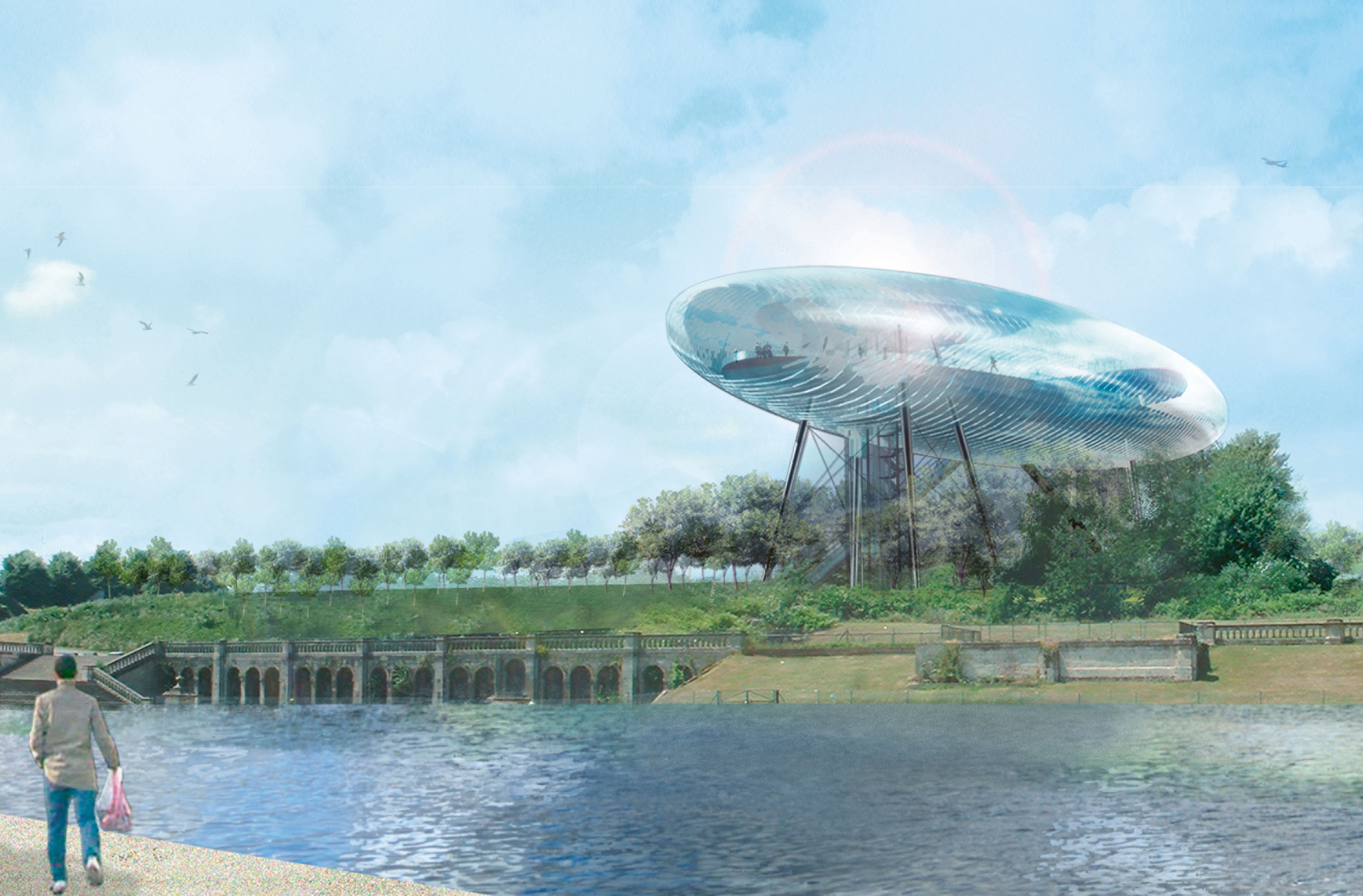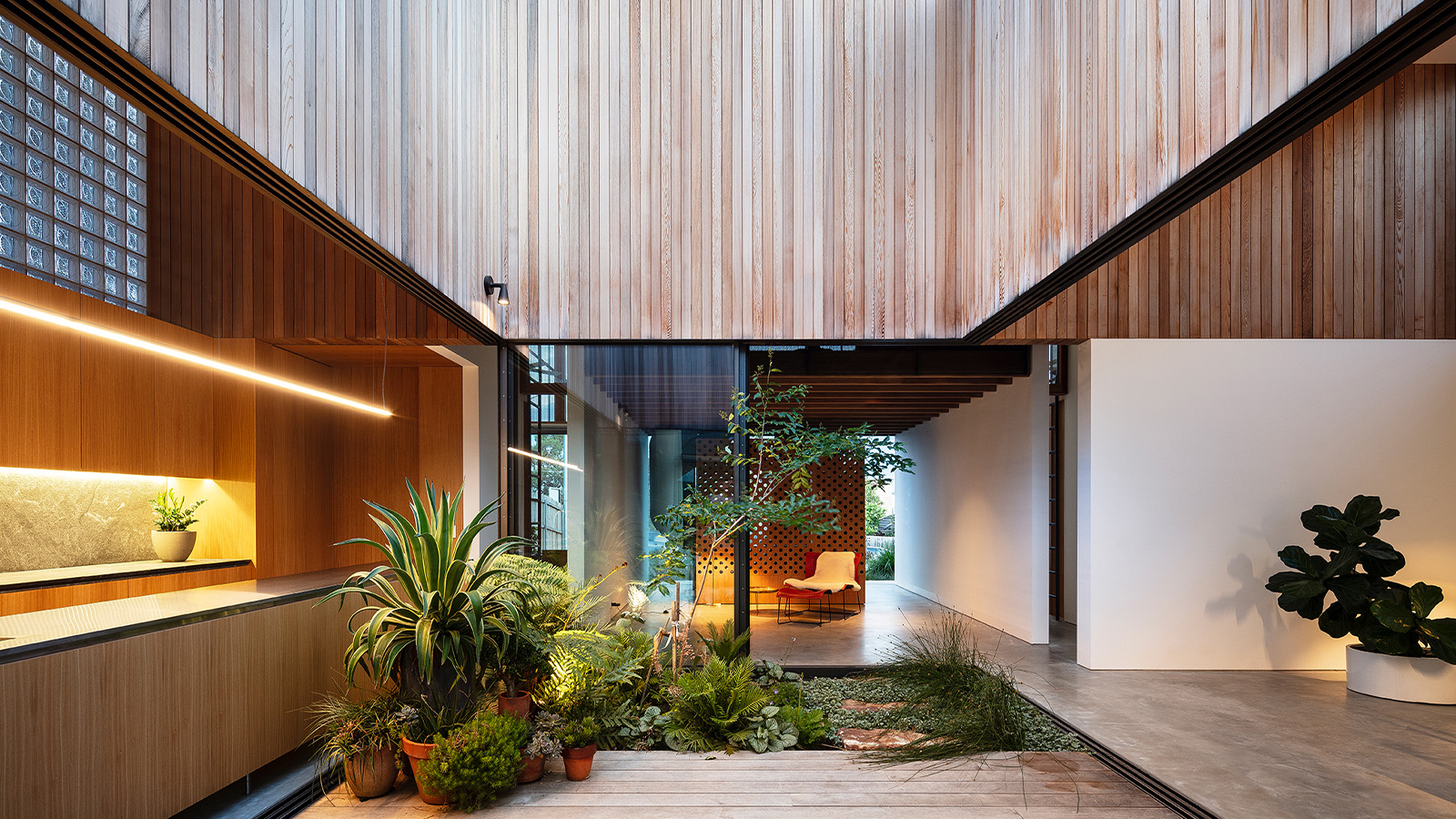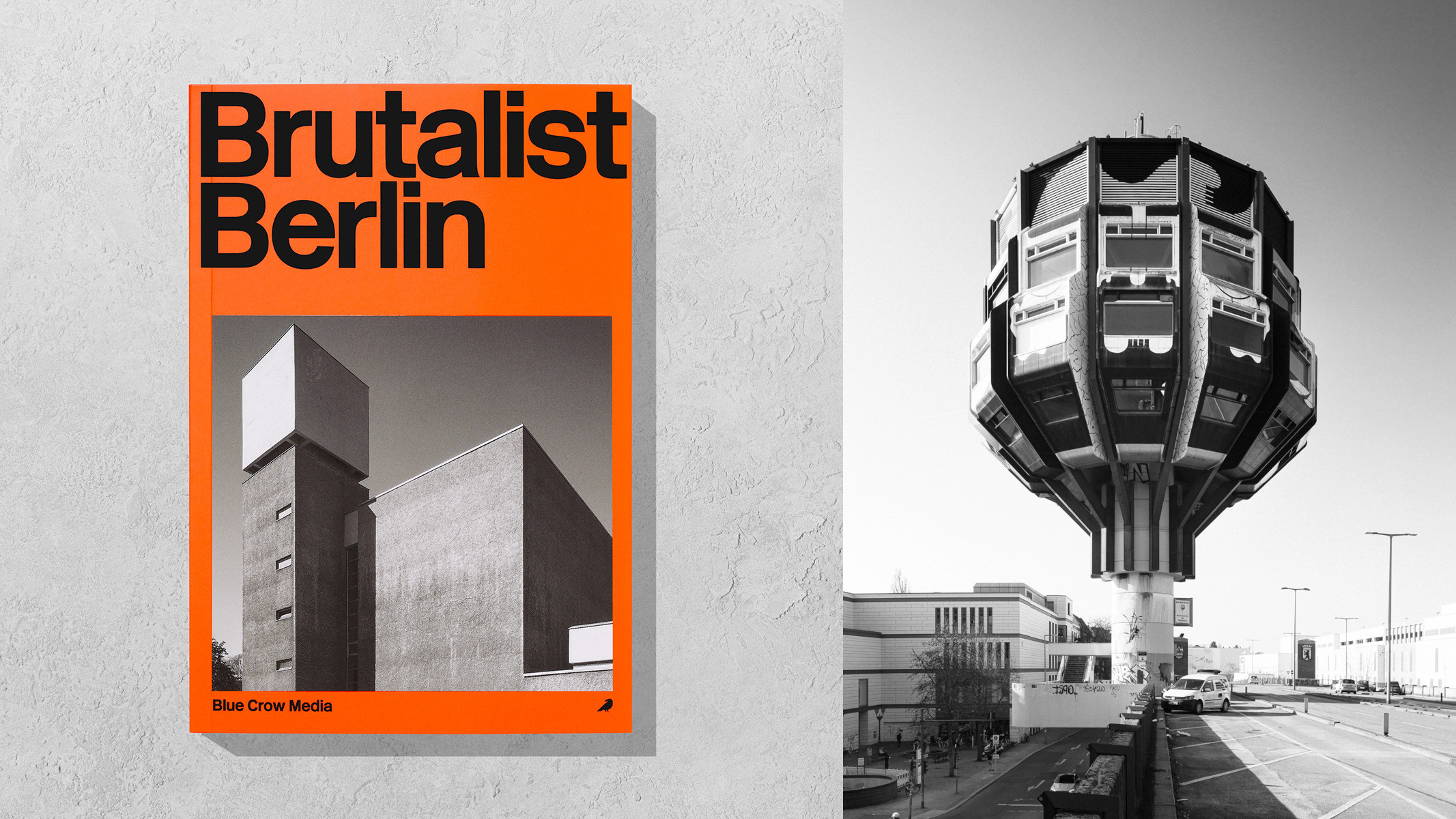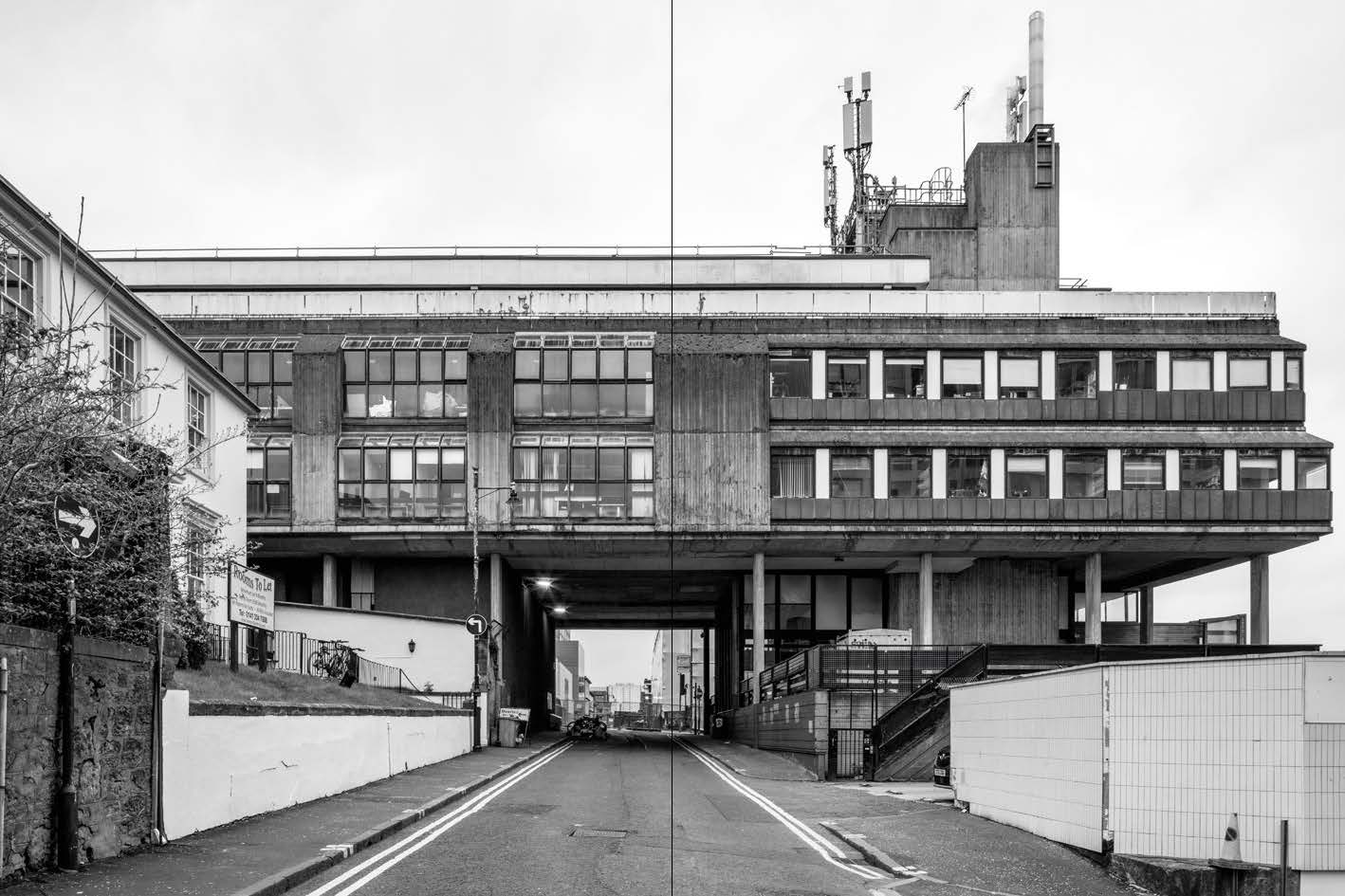‘Atlas of Never Built Architecture’ delves into unrealised architectural ambition
Unrealised grand plans are chronicled in ‘Atlas of Never Built Architecture’, Sam Lubell and Greg Goldin’s monumental new Phaidon monograph, which collates 300 architectural projects lost to the mists of time

Phaidon's new Atlas of Never Built Architecture is a fascinating alternative history of the buildings that never were, grand plans that failed to get off the drawing board, due to politics, money, or a straightforward lack of any realistic chance for construction. Every era has its architectural great white whales. This new atlas features 300 projects culled from the collective power of several centuries’ worth of architectural hubris. That is a powerful source of creativity, idiosyncratic ideas and just plain megalomania, as many of the entries demonstrate.

Das Haus Der Freundschaft, Hans Poelzig, Istanbul, Turkey, 1916
Flicking through Atlas of Never Built Architecture
Setting the book out in a traditional atlas format, with projects grouped by location, the authors, Sam Lubell and Greg Goldin, have uncovered the unusual and offbeat in addition to some familiar schemes that have endured in the cultural imagination, despite their ultimate failure. Frank Lloyd Wright's Chicago tower is the forerunner of the modern hyperscraper, for example, while the world is so overrun with starry, shapely icons that it's unsurprising to discover many, many more that only got as far as a sketch, model or render.

Spread from the Atlas of Never Built Architecture, Phaidon
Among our personal favourites are Daniel Libeskind's ill-fated 1996 design for London’s Victoria & Albert Museum extension, feted and eagerly awaited but kicked to the curb by lack of funds. Amanda Levete's Exhibition Road Quarter scheme occupies the spot once assigned to the deconstructivist's tumbling cubes, a building that would have changed the scope and scale of South Kensington. The very next project is by Levete’s former practice, Future Systems, the original ‘blob’, a ceramic white structure intended for a prominent corner site on Trafalgar Square in 1985.

Victoria and Albert Museum Extension, Daniel Libeskind, London, 1996
Every major city is represented by projects that would have had a similarly seismic impact – the ‘what-ifs’ are legion. However, among the regrets are plenty of near misses. Perhaps unsurprisingly, quite a few of these are in the brutalist architecture style, an era of high ambition, grand scale and not a jot of nostalgia or sympathy for the past.

Spread from Atlas of Never Built Architecture, Phaidon
The Middle East is well represented, with its penchant for building the unbuildable frequently derailed (only to be replaced by something even more outré). In 2002, Arata Isozaki looked set to realise a version of the City in the Air project from his student days in the utopian 1960s as the Qatar National Library; having championed the project for years, the Emir quietly dropped the idea.

Spread from Atlas of Never Built Architecture, Phaidon
Many of these projects have no visible means of support, structurally as well as financially, but the purity of the architectural rendering, untrammelled by budgets or building technology, continues to hold our interest. Whether brutalist, metabolist or constructivist, a lot of unbuilt architecture remains hugely influential.

Crystal Palace Sculpture Park, WilkinsonEyre, London, 2003
Above all, many of the entries in the Atlas of Never Built Architecture reveal the pivot points that shaped the modern world, as changes in attitudes, cultures and regimes consigned architects’ grand plans to history. For example, how different would things be if Frank Lloyd Wright’s 1957 Plan for Greater Baghdad had been enthusiastically adopted?
Receive our daily digest of inspiration, escapism and design stories from around the world direct to your inbox.

Peruri 88, MVRDV, Jakarta, Indonesia, 2012
Atlas of Never Built Architecture, Sam Lubell and Greg Goldin, Phaidon, £100
Phaidon.com, also available from Waterstones, Amazon and Barnes & Noble
Jonathan Bell has written for Wallpaper* magazine since 1999, covering everything from architecture and transport design to books, tech and graphic design. He is now the magazine’s Transport and Technology Editor. Jonathan has written and edited 15 books, including Concept Car Design, 21st Century House, and The New Modern House. He is also the host of Wallpaper’s first podcast.
-
 Chef Ray Garcia brings Broken Spanish back to life on LA’s Westside
Chef Ray Garcia brings Broken Spanish back to life on LA’s WestsideClosed during the pandemic, Broken Spanish lives again in spirit as Ray Garcia reopens the conversation with modern Mexican cooking and layered interiors
-
 Inside a skyrise Mumbai apartment, where ancient Indian design principles adds a personal take on contemporary luxury
Inside a skyrise Mumbai apartment, where ancient Indian design principles adds a personal take on contemporary luxuryDesigned by Dieter Vander Velpen, Three Sixty Degree West in Mumbai is an elegant interplay of scale, texture and movement, against the backdrop of an urban vista
-
 A bespoke studio space makes for a perfect architectural showcase in Hampshire
A bespoke studio space makes for a perfect architectural showcase in HampshireWinchester-based architects McLean Quinlan believe their new finely crafted bespoke studio provides the ultimate demonstration of their approach to design
-
 Tour these soothing courtyard homes around the world
Tour these soothing courtyard homes around the world‘Courtyard Homes’, a new book published by Phaidon, explores some of the most innovative interpretations of the genre, from Hawaii to south-east London
-
 David Kohn’s first book, ‘Stages’, is unpredictable, experimental and informative
David Kohn’s first book, ‘Stages’, is unpredictable, experimental and informativeThe first book on David Kohn Architects focuses on the work of the award-winning London-based practice; ‘Stages’ is an innovative monograph in 12 parts
-
 Modernist Scotland explores the country’s impressive legacy of contemporary architecture
Modernist Scotland explores the country’s impressive legacy of contemporary architectureA new book, Modernist Scotland, delves into the art and ambitions of the International Style in post-war Scotland, presenting 150 projects that typify an age of optimism and innovation.
-
 Explore Tom Kundig’s unusual houses, from studios on wheels to cabins slotted into boulders
Explore Tom Kundig’s unusual houses, from studios on wheels to cabins slotted into bouldersThe American architect’s entire residential portfolio is the subject of a comprehensive new book, ‘Tom Kundig: Complete Houses’
-
 ‘Brutalist Berlin’ is an essential new guide for architectural tourists heading to the city
‘Brutalist Berlin’ is an essential new guide for architectural tourists heading to the cityBlue Crow Media’s ‘Brutalist Berlin’ unveils fifty of the German capital’s most significant concrete structures and places them in their historical context
-
 Celebrate the angular joys of 'Brutal Scotland', a new book from Simon Phipps
Celebrate the angular joys of 'Brutal Scotland', a new book from Simon Phipps'Brutal Scotland' chronicles one country’s relationship with concrete; is brutalism an architectural bogeyman or a monument to a lost era of aspirational community design?
-
 A new Tadao Ando monograph unveils the creative process guiding the architect's practice
A new Tadao Ando monograph unveils the creative process guiding the architect's practiceNew monograph ‘Tadao Ando. Sketches, Drawings, and Architecture’ by Taschen charts decades of creative work by the Japanese modernist master
-
 Around the world in brutalist interiors – take a tour with this new book
Around the world in brutalist interiors – take a tour with this new book'Brutalist Interiors' is a new book exploring the genre's most spectacular spaces; we speak to its editor Derek Lamberton, and ask for his top-three must-sees